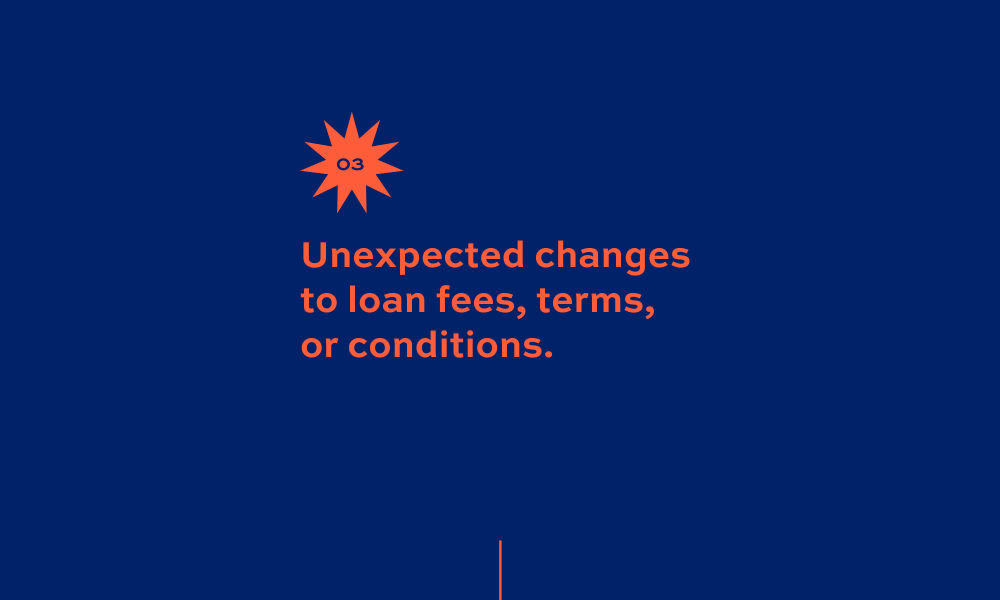Meet John Tallarigo. John is the education content developer and is working on expanding PREC coursework into new states and additional courses for our current states. His interest in property law led him to get his real estate license while studying for the bar exam! John is a graduate of NKU Chase College of Law '16 and earned his undergraduate degree from Northern Kentucky University '11. He loves the Cincinnati Bengals!
Is it Okay to Switch Loan Officers? Here's What to Know Before You Do.
Can I switch loan officers?
Here’s the scenario: You have a client who is preapproved by Big Bank at X interest rate. The offer they made on a house that they L-O-V-E love is accepted, and they apply for a mortgage with the loan officer at Big Bank. Big Bank’s loan officer comes back and says the interest rate is much higher and your clients aren’t happy. So, they ask you, “What can we do? Are we stuck with Big Bank?”
If you’ve prepared your clients appropriately and they can move fast, your clients can switch loan officers.
This is certainly not the only scenario where a client may want to switch loan officers. The rest of this blog will discuss other scenarios, how to prepare clients for each, and the risks involved with switching loan officers. Switching loan officers at the right time can save your clients on rising interest rates and thousands over the lifetime of the loan.
Why the switch?
According to the Consumer Financial Protection Bureau, studies have found that “more than 30% of borrowers reported not comparison shopping for their mortgage, and more than 75% of borrowers reported applying for a home loan with only one lender.” (TheMortgageReports.com) What does this mean? Well according to Freddie Mac this can mean missing out on up to half a percentage point of interest rates and saving thousands of dollars over the life of the loan. Freddie Mac’s 2018 study estimated that users who shopped around for at least 5 different mortgage lenders saved on average over $3,000 on their loan.
When should you shop around for loan officers?
Since real estate is becoming more and more an information industry, the sooner you plan for shopping loan officers the better. Your clients are going to be relying on you every step in the process of buying a house. Setting expectations early and often is the best practice, especially when it comes to financing a purchase.
It’s your job to make sure you’re not setting them up for failure (not being able to purchase the house they love). Start with the pre-approval process. There are no rules that say once your clients are pre-approved by one lender they can’t get another pre-approval. Having a second or third pre-approval ensures that you have 3 lenders wanting to work with your clients.
Another consideration is the quality of that pre-approval. There are plenty of “lenders” who give out pre-approvals like candy on Halloween. You need to guide them to the gold standard pre-approvals, i.e. loan officers whose pre-approvals always get approved for the mortgage.
Switching after contract acceptance.
One of the worst feelings in the world is having a client who only had one pre-approval and the bank pulled the rug out from under them after their offer was accepted. They didn’t plan with a second lender, they have to rescind their offer, and their dream house goes to someone else because the bank did not approve the loan. Too many people know that feeling, especially in the bullish market we’ve seen over the last few years. Sometimes it doesn’t matter how quickly you schedule the showing or how soon you put in an offer. If you don’t plan with a second lender you run the risk of losing a dream house if the first lender changes their mind after a pre-approval.
But let’s assume you did everything right. You have more than one pre-approval, you presented your clients offer to purchase and it was accepted, and the first lender approves a loan with a rate higher than the pre-approval. Your clients won’t be stuck with the first lender. This is a powerful moment for your reputation as an agent when you can show your client your savviness, intelligence, and foresight. You’ll be able to take the first lender's loan and shop it around to try and get a better deal.
There are several other times when your clients may want or need to consider shopping for a new loan officer.

Slide title
Write your caption hereButton
Slide title
Write your caption hereButton
Slide title
Write your caption hereButton
Slide title
Write your caption hereButton
Slide title
Write your caption hereButton
(Information provided by Homelight.com.)
When the appraisal was too low is known as an appraisal gap, which we recently covered!
Risks with changing loan officers.
As an agent, you should be striving to get as much information for your clients as possible so they can make the most informed decision. You’re taking a calculated risk when changing loan officers. Some of the risks include any combination of the following:

(Information provided by Homelight.com.)
When you properly prepare your clients for potential switching loan officers from the beginning, you take a huge step in minimizing these risks. This is the quality of service that comes with lots of experience and practice. Remember, set the expectations about financing early and often and make sure your clients have gold standard pre-approvals to make sure they get the best deal they can.
About the Author
Recent Posts






Let's Stay Connected
Want to join the prec community?
Join our mailing list!
All Rights Reserved | Perry Real Estate College | Site by Fix8




